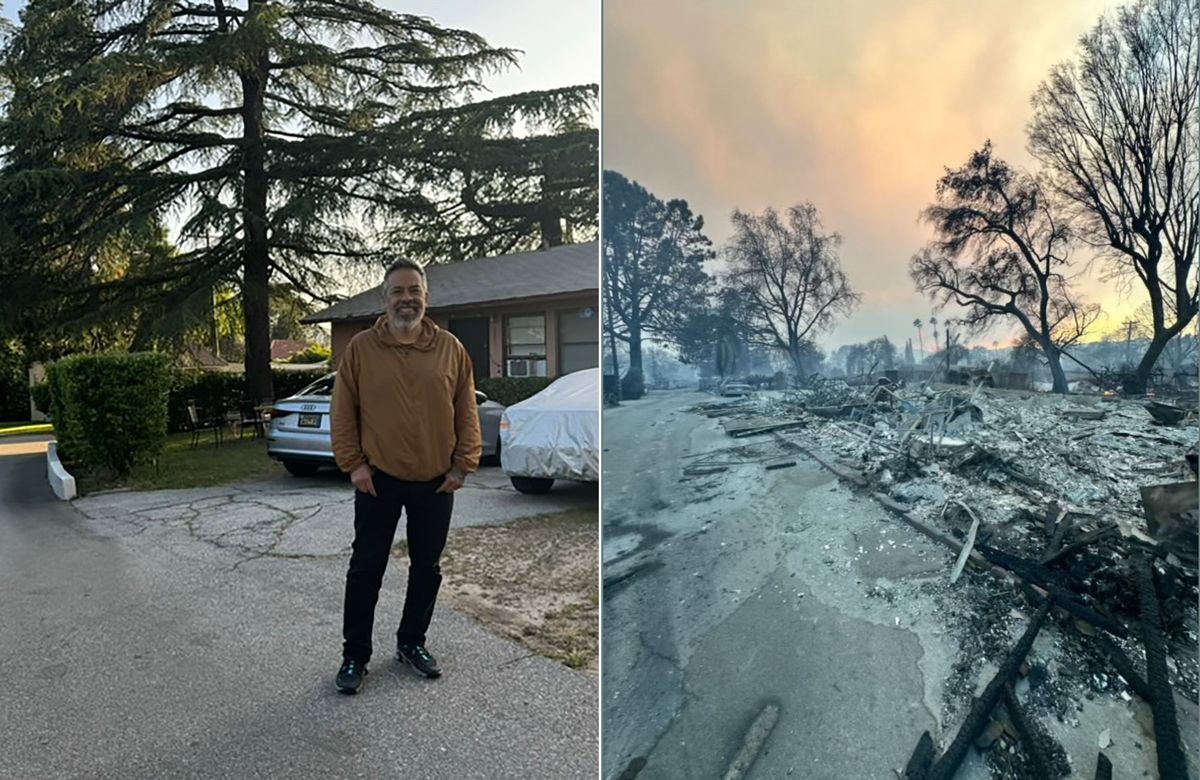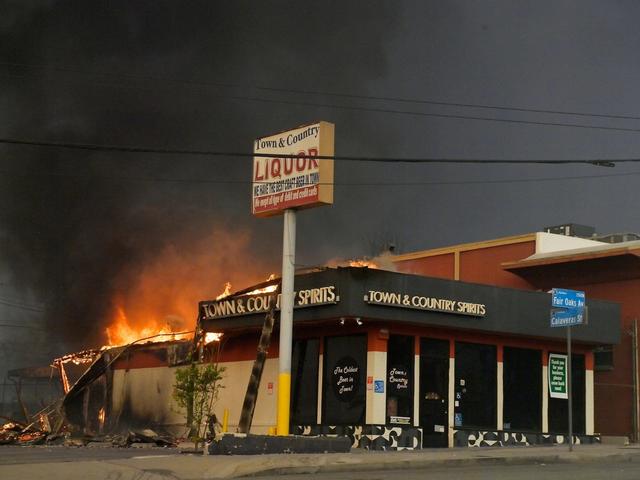Early numbers from the Los Angeles wildfires, which continue to burn amid high winds on Tuesday (14 January), are in: at least 25 people killed, upwards of 12,000 houses or residences lost and more than 40,000 acres consumed—an area larger than the city of San Francisco. But what is harder to measure is the loss of vibrant, creative neighbourhoods, and the financial and emotional toll for so many people who have seen their homes reduced to ash and rubble.
Altadena in particular, devastated by the Eaton Fire, had been a thriving artists’ community thanks to its racial diversity, relatively affordable housing and natural beauty. Picture backyard citrus trees and chicken coops. The list of artists there who have lost their homes or studios (or more often both) is staggering: Kelly Akashi, Martine Syms, Salomon Huerta, Ruby Neri, Diana Thater, T. Kelly Mason, Paul McCarthy, Christina Quarles, John Knuth, Camilla Taylor, Elizabeth Tremante, Beatriz Cortez and Kenturah Davis are just some of the most recognisable names.
As Huerta posted on Instagram this week: “Our magical neighborhood is gone. We are sad but so grateful for the many beautiful memories.” Reached by phone at his sister’s home in Van Nuys, he described frequent peacock sightings and hitting up his neighbours for coffee or wine instead of going to the store. “That part is hard to replace,” he says.
But to replace essentials and things like art supplies, Huerta and his wife now have a GoFundMe page like many artists—sites that Carla magazine founder Lindsay Preston Zappas has aggregated into a fast-growing Google document. There are also some collective funds, created by new grass-roots groups and major cultural institutions alike, seeking to provide artists and art workers with short-term relief.
Grief and Hope
This fund was created this week by a group of five artists and art professionals, including the Various Small Fires director Ariel Pittman, the artists Andrea Bowers and Kathryn Andrews (the latter of whom lost her home last week to the Palisades fire and a previous home to the Bobcat Fire of 2020). “The experience can be devastating in our field, because so many artists and art workers are freelancers or lack a reliable employment structure. And it’s hard to make a comeback,” says Andrews. Grief and Hope has already raised nearly $300,000 toward its $500,000 goal, with the aim of evenly distributing the first round of funds by the end of January to the artists and art workers—such as “kiln operators, studio assistants” and more, says Pittman—who meet very basic criteria for losses. The fund will also accept tax deductible donations exceeding $10,000 directed through its non-profit sponsor, the Brick.
The Armory Fire Relief Fund
A small, adventurous exhibition and education space in Pasadena, the Armory Center for the Arts has identified at least seven staff members and teaching artists who “have lost their homes, leaving them in urgent need of support. These individuals are the heart of our community, inspiring creativity and connection through their work at the Armory. Now, they need us to stand by them.” The centre notes that all proceeds from this fund will be used for short-term needs and be distributed directly to Armory staff and teaching artists.
Emergency Fund for ArtCenter community
One of the area’s leading art schools, the ArtCenter College of Design has created a relief fund asking for donations to help members of its community, including students, faculty and staff who have “lost their homes, businesses and life’s work, or have been evacuated to temporary shelters”.
The Huntington Disaster Relief Fund
With full- and part-time staff of around 400 people working on some 207 acres, the Huntington Library, Art Museum and Botanical Gardens in San Marino is by many measures the biggest cultural organisation in the shadow of the Eaton Fire. Karen Lawrence, the president of the Huntington, published a letter online on 10 January noting that “so many of our staff, colleagues and community have lost their homes, have been displaced, have seen familiar and beloved landscapes razed”. She has set up a disaster relief fund to accept donations “for impacted staff and collections”. The funds will be allocated by the Huntington’s trustees.
Getty Employee One-Time Relief Payment (Getty-funded, not crowd-sourced)
When Covid-19 struck in March 2020, the Getty was slow to respond. This time, the world’s wealthiest arts organisation (its endowment is around $9.1bn) is moving faster. Getty president Katherine Fleming sent an email to staff on 13 January announcing that it is providing a “one-time tax-free disaster relief payment of $1.000” for any full-time employees who have experienced financial hardship due to mandatory evacuation orders. In the same letter, she alluded to bigger plans “to work with several partners to create a programme to assist regional cultural workers and artists”. Expect more details, she says, “in the week to come”.



